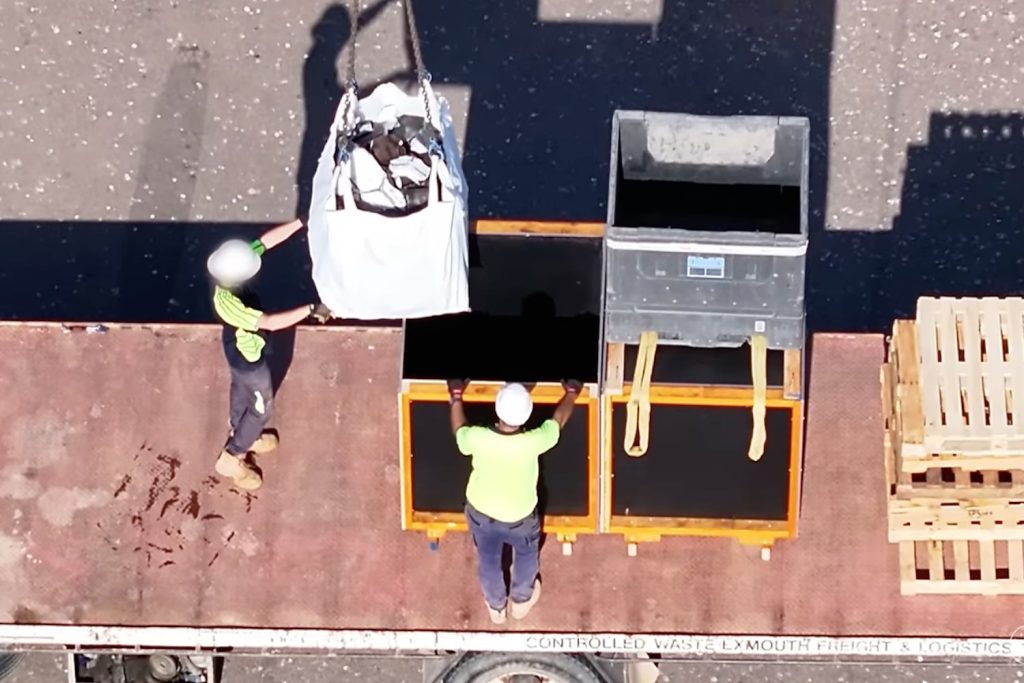Starship’s most recent test flight may have failed to demonstrate another booster catch, but it did include the rocket’s upper stage performing a graceful dip into the Indian Ocean. SpaceX recently fished the remains of its Starship rocket’s upper stage out of the water and retrieved bits of hardware to help inform its upcoming test flights.
Following the liftoff of Starship on November 19 for its sixth integrated flight test, SpaceX towed Starship’s upper stage back to port in the Western Australian coast. In addition, SpaceX employees traveled to the Gascoyne region in Australia to collect debris from the rocket’s splashdown site, including various tanks, heat-resistant panelling, and other metal pieces scooped up from the water and gathered into bags at the port, according to a video by Interstellar Gateway.
Interstellar Gateway, a content creator specializing in SpaceX news and updates, analyzed vessel movement data from all ports in Western Australia to identify the SpaceX vessel tasked with towing the rocket’s upper stage.
“This was the first flight we’ve seen a vessel rigged specifically for towing…leading us to the realization that they may be attempting to return starship back to port,” Interstellar Gateway told Gizmodo in an email, noting that all previous operations during past Starship flights were solely focused on deploying buoy cameras to record the splashdown. “Upon our investigation during their port operations, we noticed all of the needed lines and rigging materials needed to pull starship back, as well as a staging area prepped with a crane, ready to remove starship from the water.”
Earlier in October, Starship completed its groundbreaking fifth test flight. For the first time, the rocket’s Super Heavy 232-foot-tall (71 meters) booster gently came down towards the tower, which caught the rocket with its extended mechanical arms like a giant pair of chopsticks.
Starship’s latest suborbital launch was intended to include the Super Heavy booster being caught by the massive Mechazilla tower after reentry. However, about four minutes after liftoff, SpaceX declared the booster catch a no-go. Instead, the booster executed a soft, soggy landing off the Texas coast, as not all criteria for a catch were met. Meanwhile, the Starship upper stage successfully survived reentry and performed a controlled soft splashdown in the Indian Ocean.
SpaceX is currently gearing up for the rocket’s seventh test flight, hoping to build on previous launches. The company operates on an iterative improvement model, hence its desire to collect and study hardware from its test flights.
“There is only so much data SpaceX can get from Starship via StarLink transmissions as it has always sank shortly after splashdown,” Interstellar Gateway explained. “Similar to the valuable data being used from the first caught and intact booster, there are tons of structural and out of view faults that can be found from an intact starship returning to land.”
One of the main things SpaceX is hoping to study using the physical hardware is Starship’s ability to withstand the heat of reentry. “The main concern being the heat shield on starship,” according to Interstellar Gateway. “Though there are plenty of sensors monitoring the test tiles and raw areas, having physical tiles that endured re-entry are vital to improving the heat shield overall.”
Starship has come a long way since its first launch ended in a mid-air explosion, as SpaceX moves steadily closer to seeing its megarocket fly on a more regular basis.

